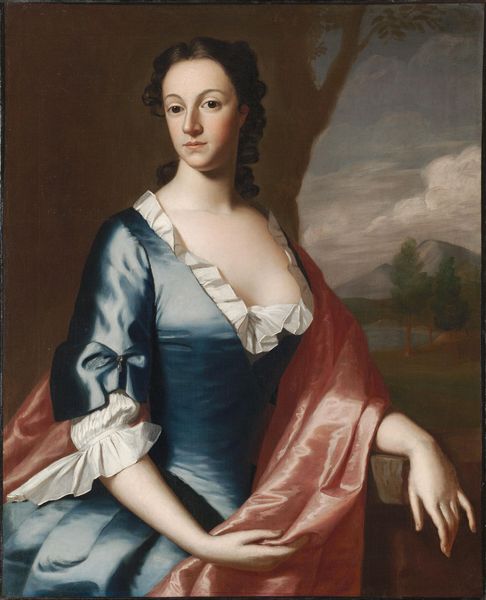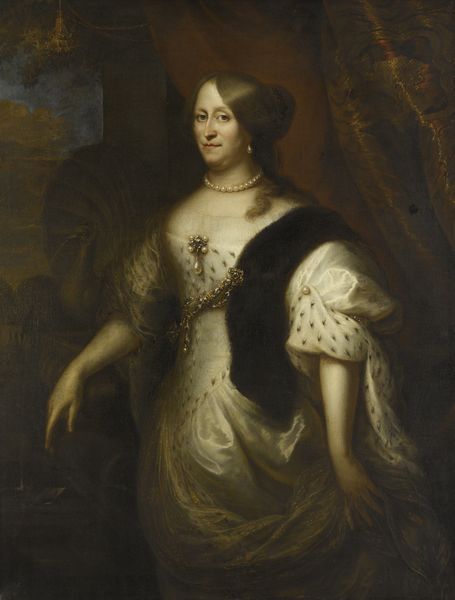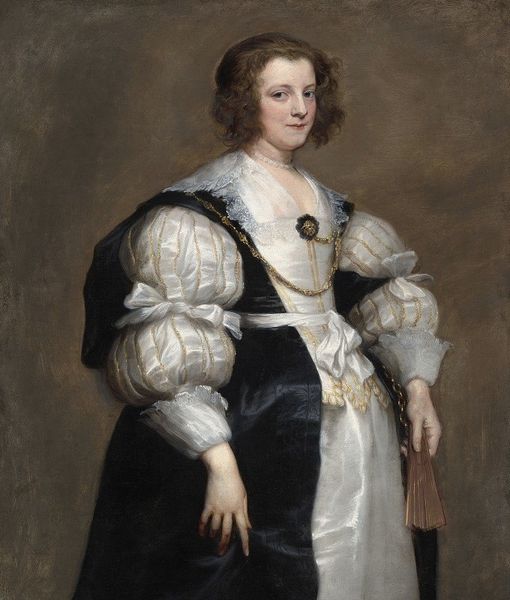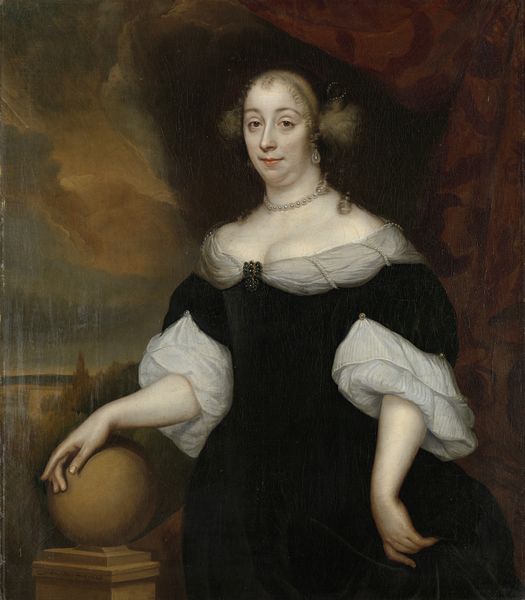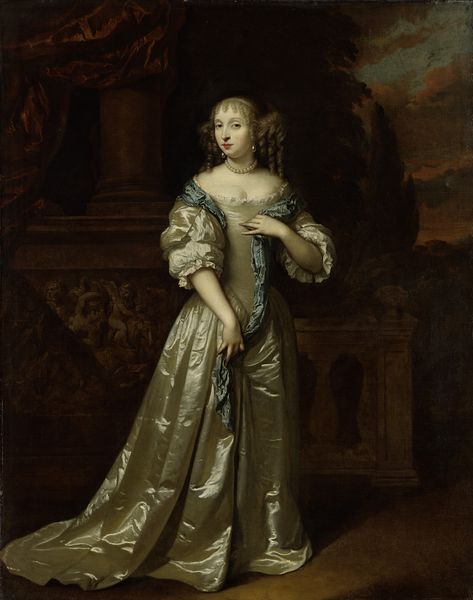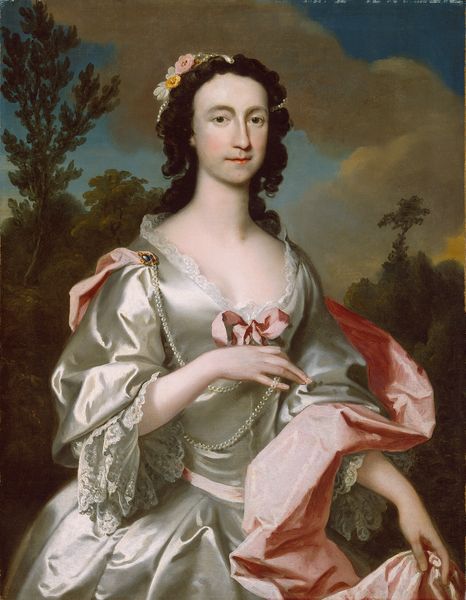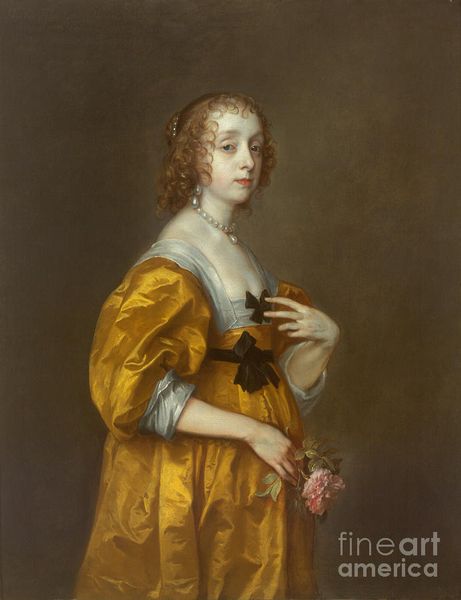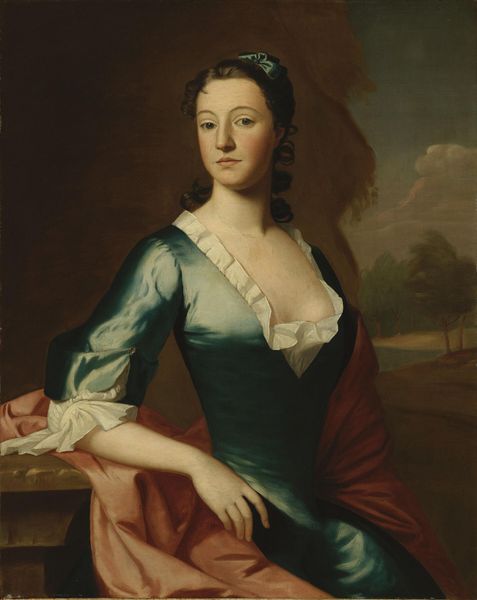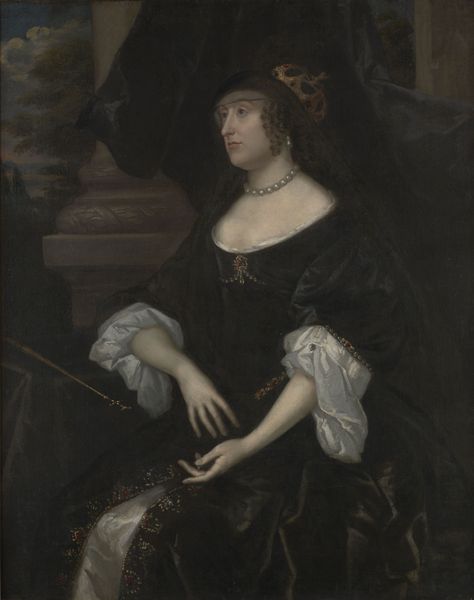
painting, oil-paint
#
portrait
#
baroque
#
painting
#
oil-paint
#
landscape
#
figuration
#
history-painting
Copyright: Public domain
Gerard van Honthorst painted "Elizabeth Stuart, Queen of Bohemia" with oil on canvas. Look closely at the Queen’s dress, a sea of black fabric. The way Honthorst rendered the folds and the sheen suggests silk, an expensive import reflecting the sitter's high status. But it also speaks volumes about global trade, and the many hands involved in the material's production. From the silkworms cultivated in China and the East, to the European weavers who transformed the raw material, textiles like this were a key commodity, and a bellwether of consumerism. The lace collar, delicate and intricate, required countless hours of labor, likely done by women. The pearl jewelry, too, signifies wealth extracted from distant lands. Honthorst not only captured Elizabeth Stuart’s likeness but also the intricate web of materials, labor, and global exchange that defined her world. The image invites us to consider the social and economic forces embedded within the artwork. It is a portrait, but also a map of material culture.
Comments
No comments
Be the first to comment and join the conversation on the ultimate creative platform.
